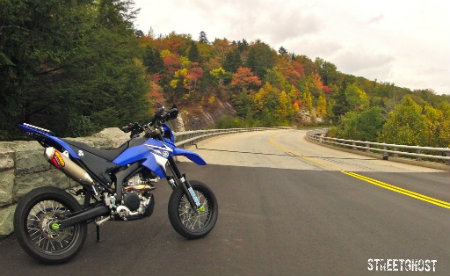- kabulpostie wrote:
- Hey All,
I'm doing a long off road trip across WA in a couple months-similar to the BDR but going east to west, the best rest Northwest Passage. I did the WABDR a couple of years ago and had to fix a flat on my D606. What a pain in the ass. If we hadn't made it to a camp ground with tables etc things would have been even worse. As I am planning on doing this trip solo I'd like to avoid little stuff that adds extra misery to tire changing. I do have tubeliss on the rear but like to be prepared in case I have a failure of that system. Right now I'm running Shinko 705s (I think-80% road) since my WR is my daily driver. I'd like a tire capable for something like a BDR.. the less expensive the better-oh yeah it should last for 40,000 miles, inflate itself, be as good as a slick on the track and as good as a paddle on sand 
So maybe I would start with the question on why it was so hard to fix the flat on the D606?
Did you have a hard time breaking the bead on the tire? If so then if you are riding with a group you can usually find some one who will loan you their bike and kick stand to use as a giant bead breaker.
I am trying to remember but normally when I get a flat on the rear typically the bead is already broken because I have been riding for a bit before I realized something was wrong. After that it is time to break out the 'crutch' and pull off the rear tire. Typically you only have to remove one side of the tire to pull the tube. I typically carry a spare tube and will replace the tube and keep the old one to see if I can patch it once I am back at camp. Add a little air to the new tube before you put it in to try and keep it from getting pinched. Over the years I have been running HD tubes and then balancing the wheels after everything is mounted and seated. After that I pull the valve core and add RideOn Balance/Sealer not so much for the balancing but rather as a preventive measure for punctures/flats. I also typically don't run much under 14 PSI so I really don't have an issue with pinch flats either. I can't recall the last time I had a flat on a ride but now that I say that I am sure one is coming.
Usually the pain for me seems to be getting the valve stem through the hole since my hands are fairly large. Once that is done, I spoon the tire back on an pump it up.
One mistake I have seen on field repairs like this is that the rider will only break one side of the bead on the tire. While that will work to remove the tube there is the issue of putting the tire back on. You really need to have both beads broken and the side opposite of the one your are working on sitting in the drop center of the wheel when you spoon the tire back on. If you find yourself exerting a lot of force to get the tire on then it is likely the opposite end of the tire is not in the drop center of the wheel. This usually happens to me when I put too much air in the tube when I was installing the tube.
I change my own tires at home and generally speaking I always try to use my field kit to change the tires. Keeps me in practice and also makes sure that all the tools I am using are there and functional. To me the hardest part of changing the tire is removing and installing the wheel. Everything else is pretty straight forward once you have the technique down.
If you are happy with the performance of the 606 when you are riding I would just stick with it and get some practice on the tire changing aspect.
